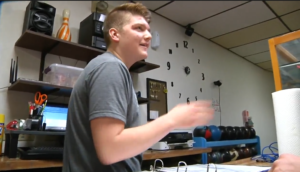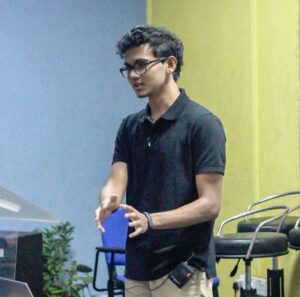Lam’s Lanes was a dilapidated old bowling alley. Located in the small town of Newburg, North Dakota, Lam’s Lanes had been abandoned for five years when high school senior and music aficionado Trent Hunskor decided the town needed something to do. Until that point, people had to travel to other nearby towns to find any proper entertainment venues for birthdays or holiday parties. Trent had the idea to re-open the four-lane bowling alley.
 After getting some help from his parents, Trent opened up Lam’s Lanes again. It has since become a hotspot in the center of town. Though Trent plans to become a music teacher when he graduates college, he hopes to continue running Lam’s Lanes on the side. At the very least he wants his brothers to take over and make it a family business.
After getting some help from his parents, Trent opened up Lam’s Lanes again. It has since become a hotspot in the center of town. Though Trent plans to become a music teacher when he graduates college, he hopes to continue running Lam’s Lanes on the side. At the very least he wants his brothers to take over and make it a family business.
I think it’s great to see someone capitalizing on a scenario. Of course, it’s never good when a company goes out of business. But taking that out-of-business building and put it to new use is a great example of adaptation and capitalization.
On top of that, Trent’s insistence on bringing back a valuable part of the community is admirable. Far too many people forget that a business is all about bringing value to your customers, and Trent seems to understand that this business is as much about helping the local community with new entertainment and jobs as it is about making money.
Finally, a lesson I haven’t heard of yet is his exit plan. He knows he won’t be able to hold on to the company forever, but he’s already bringing in his brothers to learn the ropes of running the business should they need to. It seems like a lot of these young entrepreneurs don’t really know what their exit plan is, but Trent hits with the double whammy of both having an exit plan and preparing his brothers to become entrepreneurs on their own.
Ultimately, Trent is a great help for his family and his community, and a great example to us all of what a good, capitalizing entrepreneur should look like.



